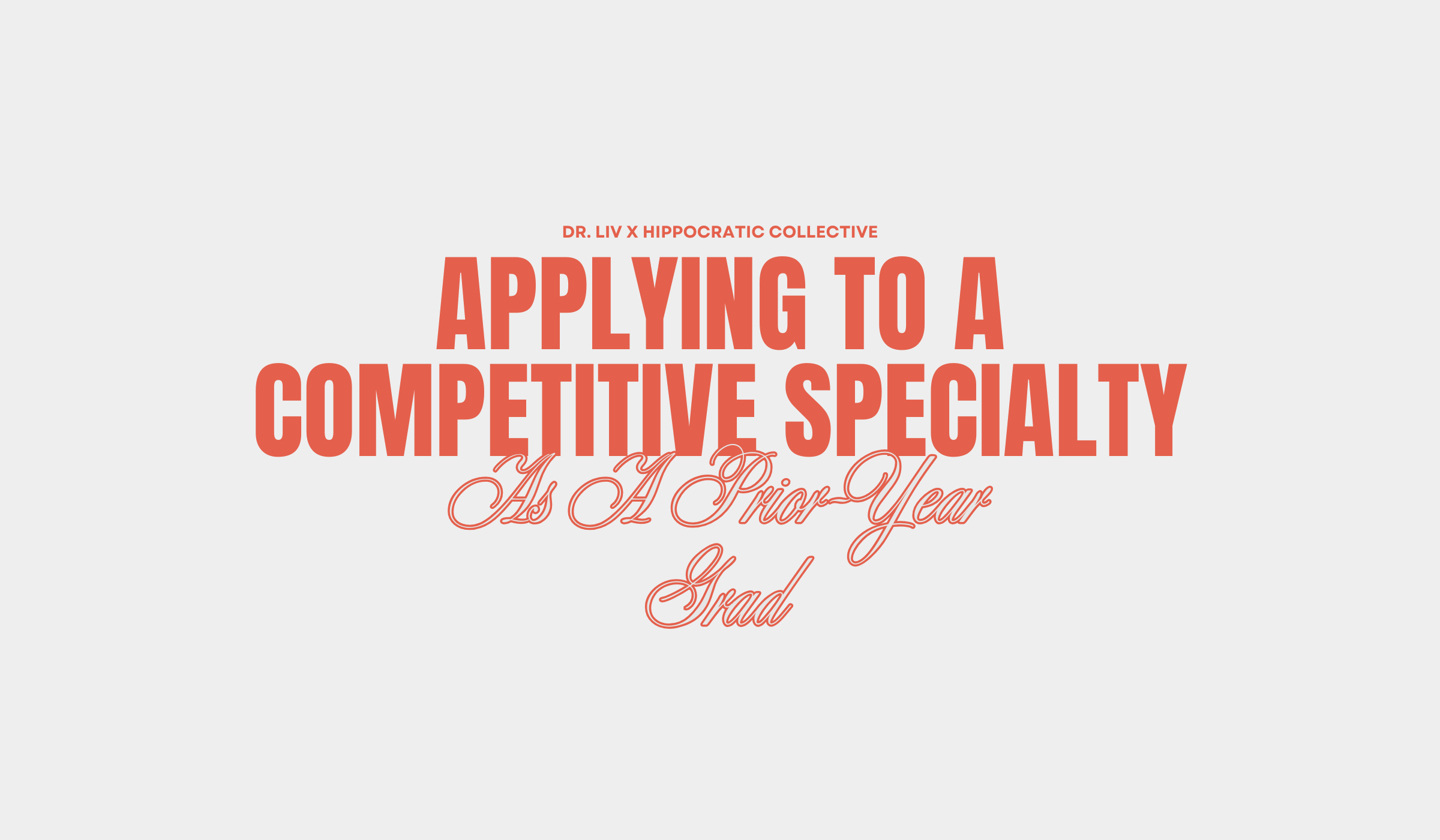Part 4: How I Changed Specialties from Family Medicine to Dermatology
When I applied to Family Medicine, the hardest part was narrowing down over 700 programs.
For dermatology, the hardest part was the math: a match rate under 50%, and even lower for prior-year graduates.
Evaluating Your Candidacy
Before I made the leap, I had to be brutally honest with myself:
Did I actually stand a chance?
I believed that I did. In medical school, I had seriously considered dermatology and built a track record that aligned with what programs value: strong academics, research, and mentorship in the field.
By the time I finished intern year, I already had the following:
- A dermatology research year
- Mentors and letter writers in dermatology
- Derm and non-derm publications
- A dermatology sub-I
- A high Step 2 score
- Strong academic credentials (Honors in clerkships, AOA, NIH grant, etc.)
- A backup plan if I didn’t match
What I didn’t have: away rotations or the advantage of applying straight out of medical school.
Deciding When to Apply
Advisors from my medical school’s dermatology department recommended I wait a cycle before applying. Their reasoning made sense– that I could use this time to network and publish. But, waiting another year would have turned a two-year gap into three.
Ultimately, I applied immediately. I had momentum, recent research experience, and an otherwise solid application. Delaying felt riskier than trying.
My Timeline
- Winter 2024: Reconnected with mentors, finalized my decision to leave family medicine
- Spring 2024: Informed my program I was leaving
- June 2024: Completed intern year
- September 2024: Submitted ERAS
- Winter 2024: Interviewed for dermatology positions
- March 2025: Matched into dermatology
- July 2026: Begin PGY-2 year
Note that I am not in clinical training for 2 years: July 2024-July 2026.
What’s Different About Applying as a Prior-Year Graduate
1. ERAS feels easier.
The second time around, I already knew the system. Updating and adapting my old application from Family Medicine to Dermatology was far less stressful than starting from scratch.
2. I had more self-confidence.
After intern year, I had more clinical experience to draw from. When interviewers asked, “Tell me about a time when…,” I could speak from the perspective of a physician-in-training rather than a medical student recalling isolated experiences. That difference in confidence was noticeable– to me and to my interviewers.
3. I knew that not matching was not the end of the world.
In medical school, not matching feels catastrophic. But once you’ve been through residency and met others who’ve taken unconventional paths, you realize there are always next steps. I still would’ve been devastated if I hadn’t matched, but I also had perspective and backup plans. I didn’t need to follow a flawless, linear path.
Final thoughts
Switching specialties isn’t about chasing prestige or proving something to anyone else. It’s about aligning your work with who you actually are as a physician. If you’re considering it, be honest about your strengths, gather mentors early, and prepare for uncertainty… but know that reinvention in medicine is possible.
Next up in Part 5: Why switching specialties resulted in a two-year gap and how I’m spending the time.


.jpg)

.jpg)